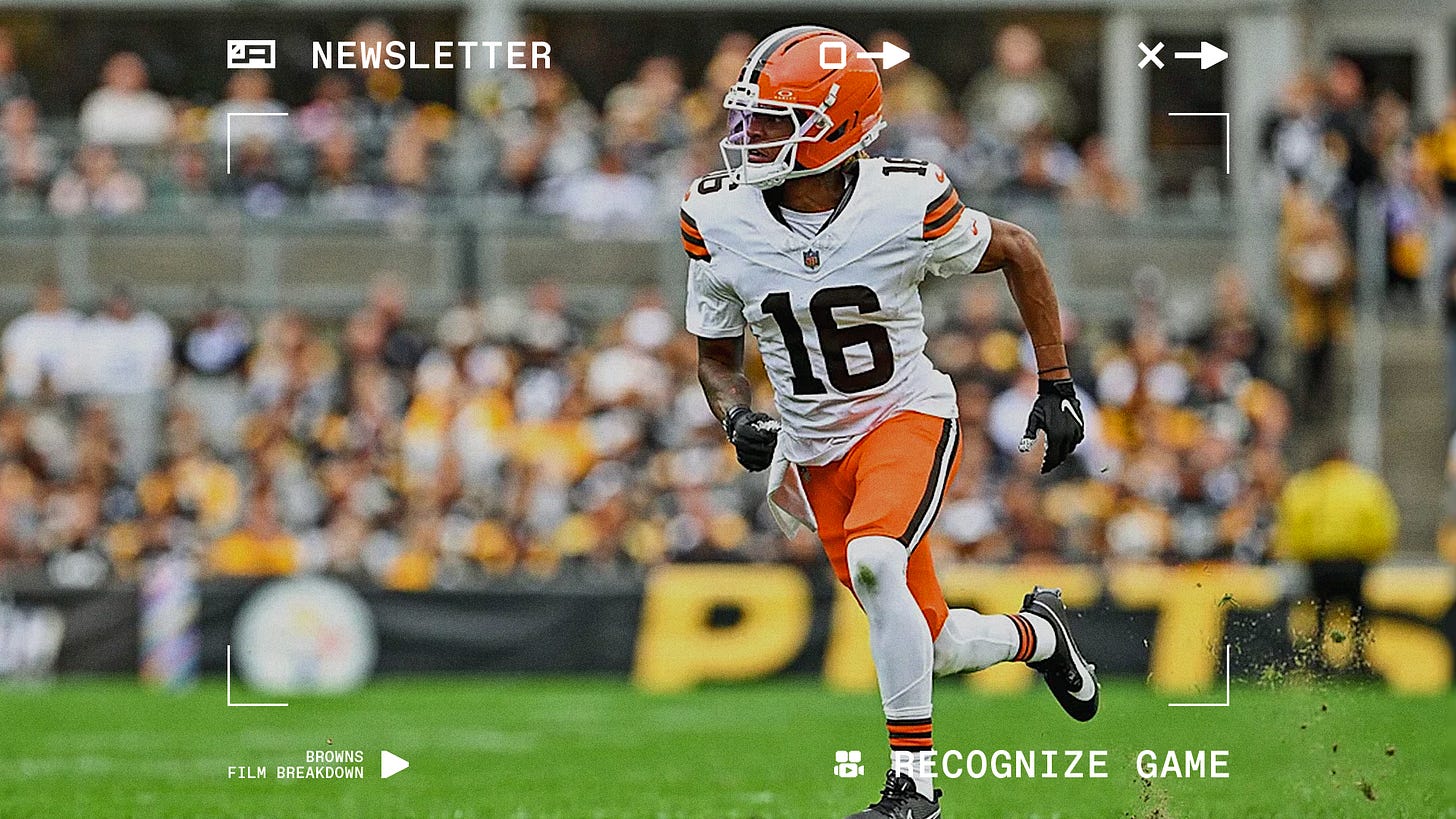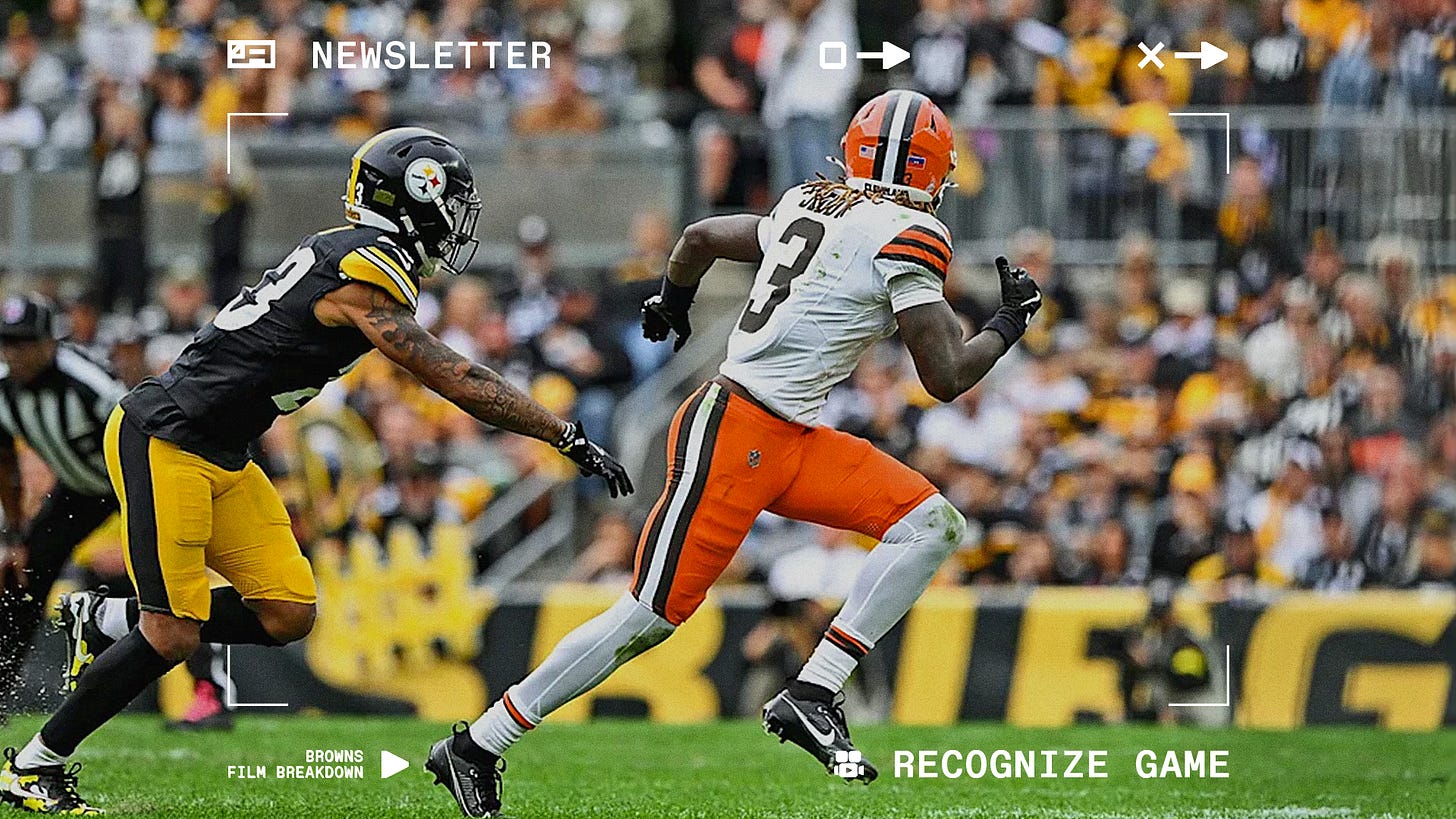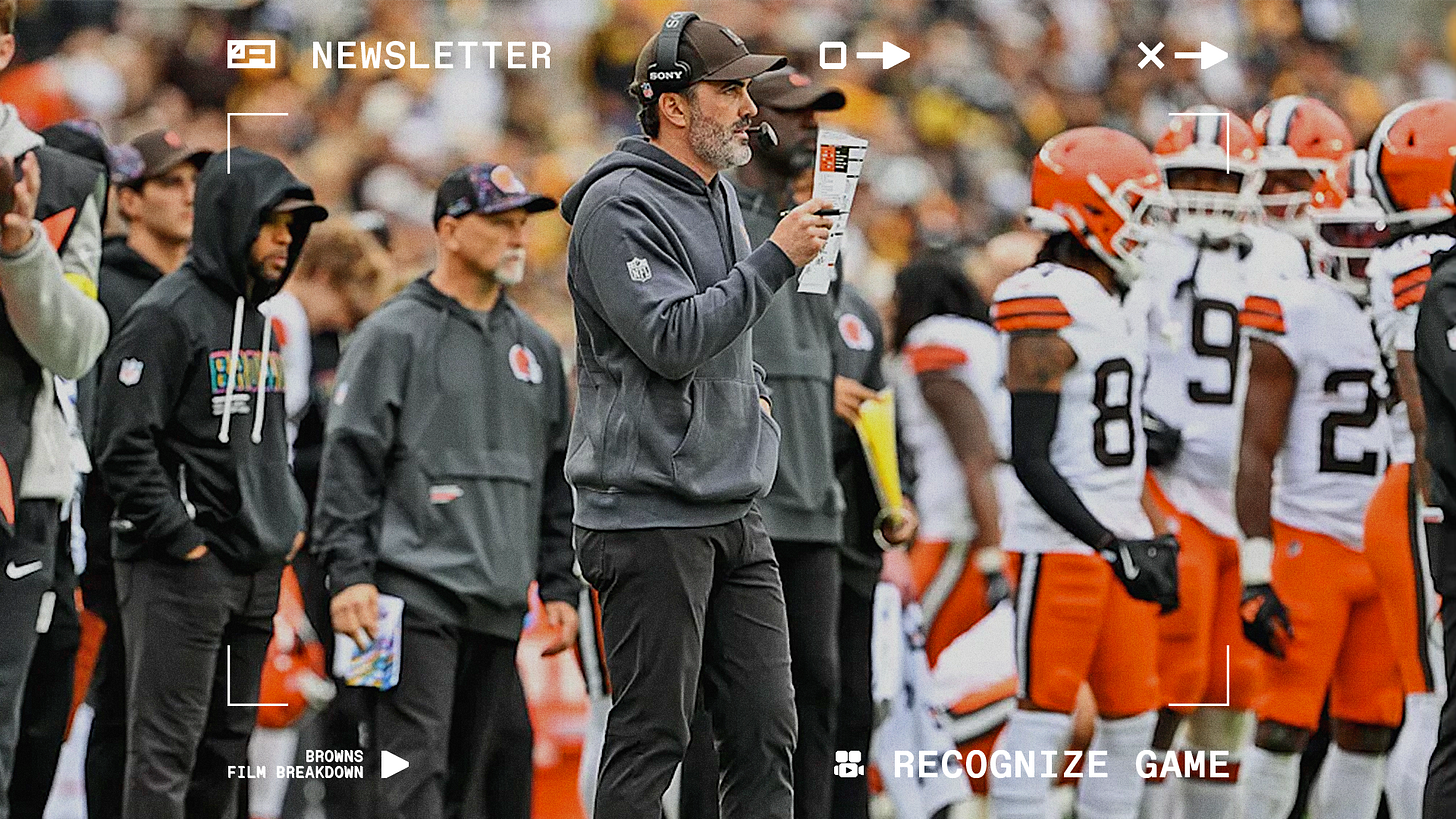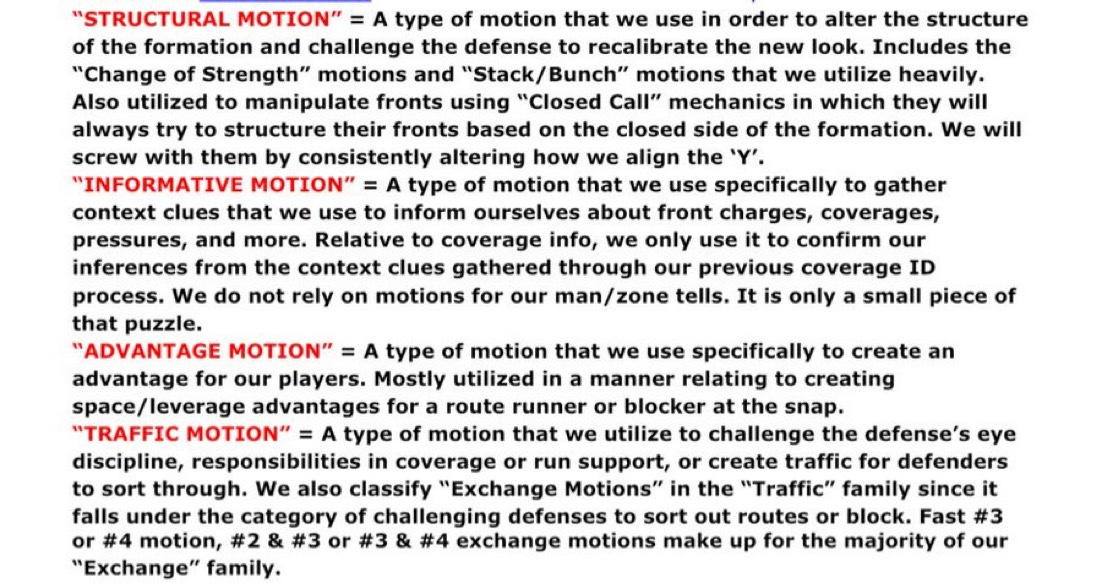The Opening Drive 10/14: The Purpose of Motion and the Browns Usage
It doesn't solve everything, clearly, but it's a tool play-callers have to maximize.
I continue to study the Browns’ offense as closely as possible to sort out the issues and determine whether there’s any glimmer of hope for a turnaround — or if this unit is simply down for good. I like to study trends in formation usage, motion, coverages faced, and more. All of it tells a story.
You’ve probably heard me mention throughout this season that the Browns have faced the league’s highest rate of man coverage. In fact, they’ve had 15 more dropbacks against man coverage than any other team in the league — and they’ve yet to punish it. We’ve gone down the rabbit hole of reasons why, but one major factor is their general lack of talent at the receiver position and the inconsistent pass protection that rarely holds up long enough for receivers to separate.
As part of my study, I wanted to let you in on why I feel motion usage is so important. Recently, offensive coordinator Tommy Rees spoke about getting more out of the position group, and he mentioned motion usage as a pathway to doing so:
“We’ve got to put them in good positions to have success. We’ve got to be on time, we’ve got to be accurate when we have opportunities, and we’ve got to make contested plays — that’s part of the NFL. But as a staff, we want to make sure that we’re putting them in the right spot and giving them the best opportunities to succeed based on what they do best. Whether it’s through motion or variations in formations, we’ve got to be on it to make sure we allow those guys to go out there and play to their full potential.”
The motion issue was bad last year. The Browns were 31st in the league in usage with just 37.7% in total and just 37.9% at the snap. This year they have increased significantly going up to 51.8% (19th overall) and 51.2% at the snap (18th overall). As we know, this is not a “cure everything” remedy but it does help to know they are applying it more this year even if the best offenses in the league are using it closer to 60%-70% of the time.
Today, quickly, I want to define the motion types for you and help you understand them when you see them.
Before we do that, below you’ll find the latest in the BFB catalog for supporters to dig into. Click the link to become a supporter if you haven’t already, and enjoy all the latest from Browns Film Breakdown.
What’s Going On at Browns Film Breakdown
Latest Podcasts:
Latest Film Rooms:
Latest Articles:
Opening Drive 10/13: Stefanski Must Prove He Still Has Locker Room
GameDay Opening Drive 10/12: Week 6, Another Trip To Three Rivers
Opening Drive 10/11: Steelers Quick Passing Has Been Critical To Their Success
Within every play we have a chess match. The defense is trying to keep it’s intentions hidden for the most part, and the offense should be trying to make those responsibilities tough on the defense. Confuse them, misdirect them, and then run through or around them. Motion helps with that as it’s one of the few pre-snap movements an offense can do to confuse defense. Most of the deception stuff is in the defense’s hands.
Before we define the types of motion, let’s not confuse it with a “shift.” The offense is free to shift and move as many players as they want as long as they are all set for a full second before the ball is snapped.
If the offense wants to get set, and then move all of their players at the same time, they are allowed to do so, as long as the players aren’t moving at full speed. Any sudden football moves can be called a false start or illegal shift.
The Browns used a shift function on their first snap on Sunday. They came out in 13 personnel (1RB, 3TEs) with three inline tight ends, the quarterback under-center, and one running back behind the quarterback. Traditional run look. Then they shifted into an empty set. Here is the play.
The purpose of a shift is usually driven by getting defense into a personnel look, heavy linebackers here, and then trying to confuse them by spreading them out and throwing into windows. The Browns missed a throw here, but you can see why they went this route.
Now, let’s define the motions and take a look at each. TheHonestNFL is a great resource for this and his writeup encapsulates each type well.
The first is the structural motion usage and the Browns used this in several ways. They get the defense to identify a strength and then motion into the heart of the concept’s primary read (left side here). Watch the confusion it causes the linebackers and the window it opens up for the throw. I only have the Browns using this type of motion 22% of their process. It needs to increase.
The next motion is the informative motion style. It is meant to uncover the defense’s approach by often using a running back aligned wide, or tight, and moving them either into the backfield. It unfolds the coverage by watching who follows the running back. If it’s a linebacker, you know it is man coverage, if they simply bump the cornerback outside then you know it’s zone.
Here is the opposite view with the running back going wide and the cornerback expanding. This means zone.
The next is advantage motion where we look to get players moving for momentum on a block or to get out quicker on a route. These have grown in popularity over the years and the Browns are starting to apply it. Watch Luke Wypler (56) go in short motion to kick out the edge. The goal being to get the movement needed to win the block.
You can also get it to help on perimeter with a quick screen as they do here with Harold Fannin Jr. The purpose is to create the momentum and angle for the perimeter goal.
Another example here putting Fannin wider in the slot and having him run in short motion to kick out the opposite end in split zone. Not something a backside edge defender would expect given that alignment.
Then in the passing game where you can get receivers working inside on motions to help them get a running head start on crossing routes as we see here from Jerry Jeudy.
Same here from Jamari Thrash on a sideline vertical route. Get the defense moving, sure, but also get the receiver moving right off the snap. It has an Arena League or Canadian Football feel to it but the purpose is to gain that tactical advantage with a moving start.
This is the Browns primary motion usage and accounts for nearly 50% of their motion concepts.
The final motion is less common, and one the Browns need to use far more frequently to create chaos. That is traffic motion. It is meant to force defenses to apply their rules to coverage or run fits that become tricky when applied to bunch sets or tight alignments.
Watch as the right side outside receiver motions to the the inside man (No. 3) on the left side and forces the coverage rules to dictate based on route release. Watch the outside CB (bottom of the screen) remind his teammates of their rules against this bunch set based on the motion. There is pointing and reminding right up until the snap. This opens up a clean inside/out break spot for Jeudy who makes the play.
The Browns only apply these on their man coverage situations about 14% of the time and in order to spring open more routes they have to uptick usage and creativity within traffic motion.
The Browns survival, or hopeful offensive turnaround, the rest of the year depends on getting more out of these applications. Hope you enjoyed learning about these motion types and if you have any questions, let me know in the comments.
If you’re not subscribed over there, rectify that—the Opening Drive remains free, but there’s more quality content coming as we review Week 6 performances. If you’re not with us in a supporter capacity, you’ll want to rectify that as well so you don’t miss any of the key content coming this week. Also, tell a Browns fan in your life about the miracles happening at Browns Film Breakdown. We appreciate all of you.
Browns Film Breakdown will return later today with some fresh content.











Great stuff!
love everything on BFB, but this is the stuff that makes this place special ... thanks for the detailed explanation Jake